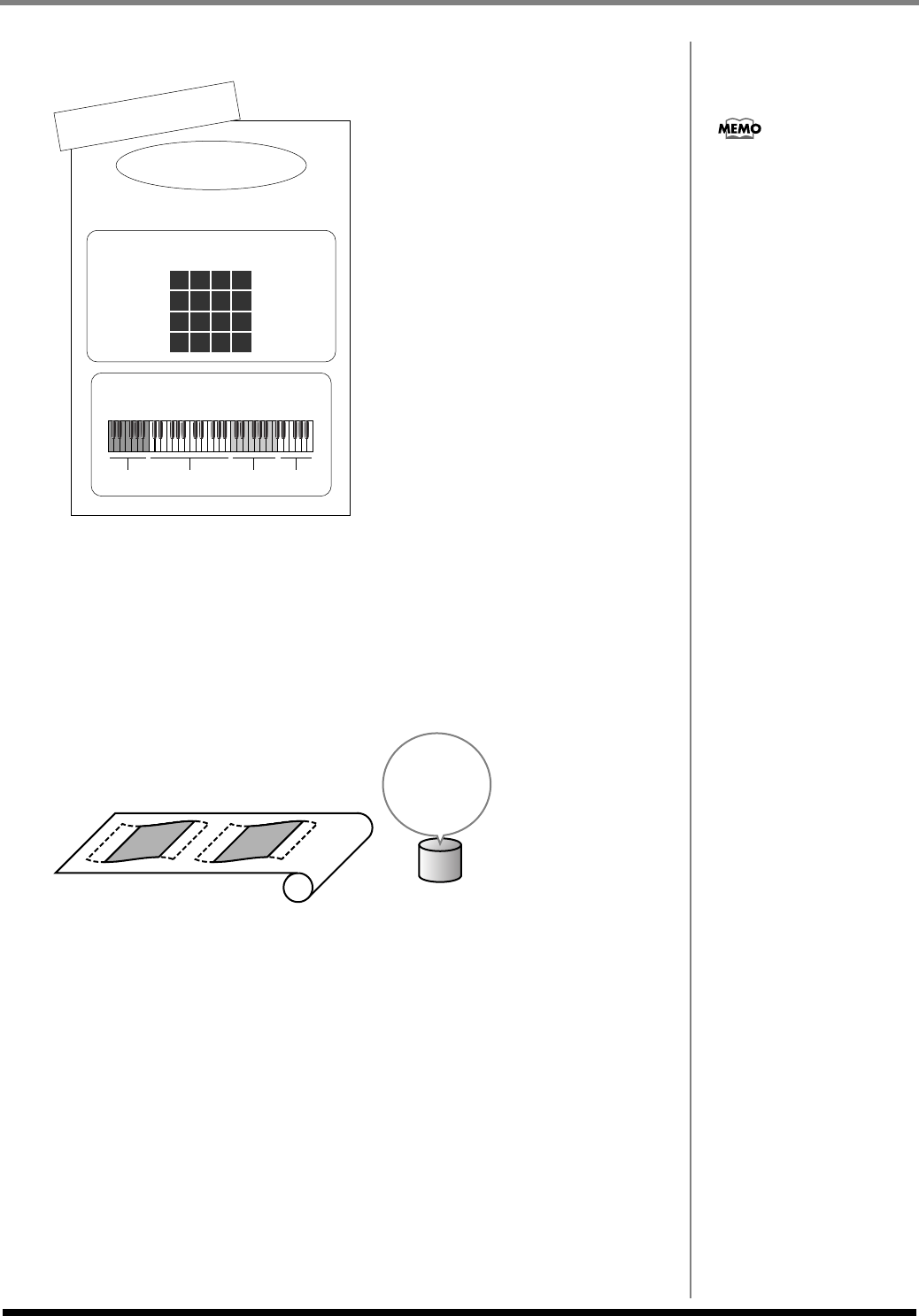
26
Main Features
Patches and Partials
Patches contain “partials,” which are the
smallest unit of sound-producing data on the
MV-8000. You can assign up to 96 partials to
a patch, and assign a sample to each partial.
You can think of a partial as corresponding to
a note number (e.g., a single key of a
keyboard). By assigning a different
percussion sound to each partial you can
create a patch that plays a set of rhythm
instruments, or you could create a patch that
assigns nothing but piano samples from low
to high ranges of the keyboard.
Patches and Parts
As the MV-8000 has sixteen sound generators (parts), can use sixteen
musical-instruments (patches) simultaneously. Each MIDI track will play using the
patch that is assigned to the part being controlled by that track. A part provides mixer
functionality to adjust the volume and pan (stereo position) and the amount of signal
that is sent to the effects.
Audio phrases
Samples in a project can be played by placing them in an audio track. Since the audio
phrases (audio events) placed in an audio track contain tempo data, they can
synchronize with the sequencer playback. Even if you speed up or slow down the
sequencer tempo, the audio phrases will shrink or stretch in realtime, so that there will
be no gaps between them.
A patch contains:
Up to
96 partials
Each partial is assigned to a pitch range
on the pads or on a connected keyboard.
In this example, Partials 1-16 ("P1"-"P16")
can each be played from a pad in one pad bank.
P2
P6
P10
P14
P1
P5
P9
P13
P3
P7
P11
P15
P4
P8
P12
P16
In this example, four partials ("P1"-"P4")
are each assigned to an area on the keyboard.
P1 P2 P3 P4
A “drum type” patch is one in
which the partials are assigned
to create a set of rhythm
instruments. A “keyboard
type” patch is one in which the
partials are assigned to
produce a scale of pitches.
Audio tracks x 8
Audio phrase


















